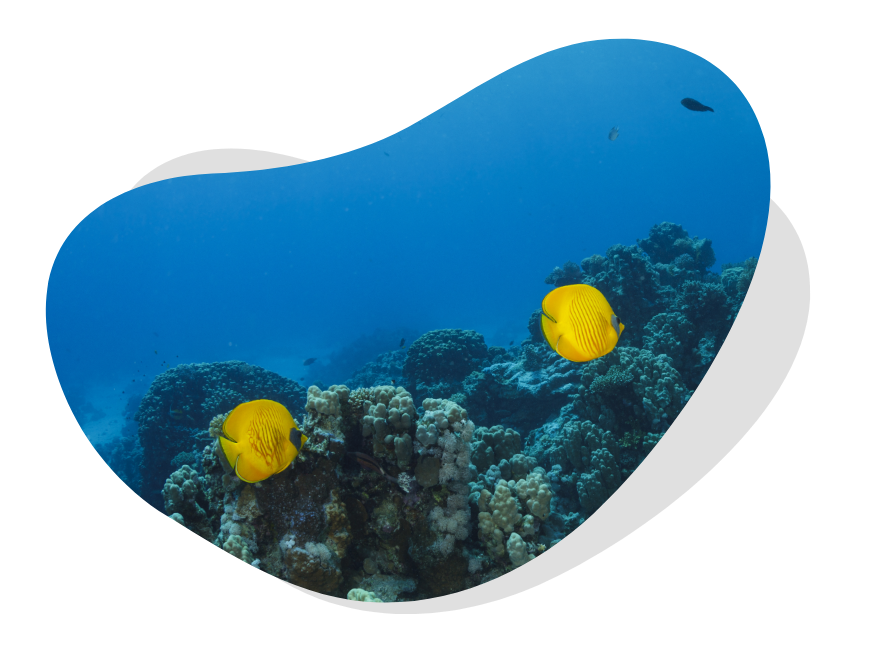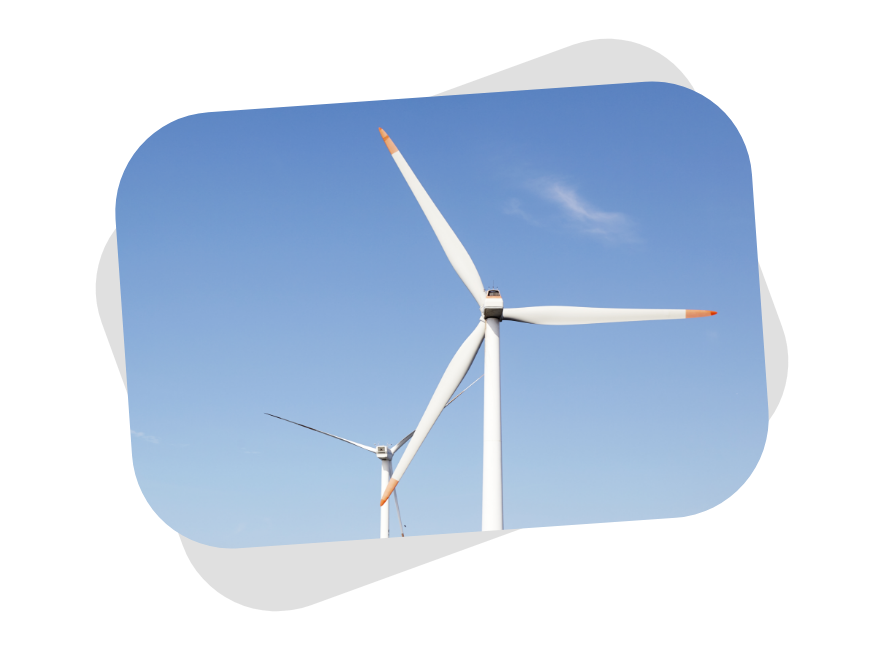




Authors : Sojung Sim, Sujong Jeong, Chaerin Park, Jaewon Shin, Insun Kim, Sujin Ban & Cheol-Soo Lim
Author Affiliations
- Sojung Sim : Department of Environmental Planning, Graduate School of Environmental Studies, Seoul National University, Seoul, Republic of Korea
- Sujong Jeong : Department of Environmental Planning, Graduate School of Environmental Studies, Seoul National University, Seoul, Republic of Korea
- Chaerin Park : Department of Environmental Planning, Graduate School of Environmental Studies, Seoul National University, Seoul, Republic of Korea
- Jaewon Shin : Department of Environmental Planning, Graduate School of Environmental Studies, Seoul National University, Seoul, Republic of Korea
- Insun Kim : National Institute of Environmental Research, Incheon, Republic of Korea
- Sujin Ban : National Institute of Environmental Research, Incheon, Republic of Korea
- Cheol-Soo Lim : National Institute of Environmental Research, Incheon, Republic of Korea
ISSN : 1976-7951
Issue Date : 15 November 2023
Issued By : Springer Nature Link
Keyword : Carbon dioxide, Optimal network, CO2 emission, Transport model
Abstract
To achieve net-zero carbon emissions by 2050, it is vital to prioritize climate action and monitor the progress of policies with accurate emission estimates. As CO2 emission estimates can be independently verified using atmospheric CO2 measurements, the need for optimal CO2 monitoring networks has increased. This study proposed an experimental method for designing national-scale atmospheric CO2 monitoring networks. We used gridded data for fossil fuel CO2 emissions, facilitating the selection of emission grids as potential monitoring sites. First, we determined the appropriate number of CO2 monitoring sites, which increased in proportion to the magnitude and variability of CO2 emissions within the region. Subsequently, the emission grids corresponding to the region were arranged in descending order of emissions. Grids were then selected at regular intervals as potential monitoring sites, aligning with the predetermined number of sites. This selection process ensured that monitoring sites were evenly distributed, ranging from areas with high emissions to those with lower emissions. Lastly, as a verification step to assess the suitability of this potential network, a transport model simulating meteorological conditions was employed to evaluate its coverage to detect the influence of CO2 emissions. This method was applied to South Korea, and 96 candidate monitoring sites were created. The optimal CO2 monitoring network distributed evenly across South Korea could evaluate variations in CO2 emissions. The simple monitoring network design method proposed in this study can accelerate the installation of a national CO2 monitoring network, ultimately enabling the verification of CO2 emissions and supporting climate policies.
Authors : Jieun Park a, Kyoung-Hee Lee b, Hyewon Kim c, Jisu Woo b, Jongbae Heo d, Kwonho Jeon e, Chang-Hoon Lee b, Chul-Gyu Yoo b, Philip K. Hopke f g, Petros Koutrakis a, Seung-Muk Yi h i
Author Affiliations
a. Department of Environmental Health, Harvard T.H. Chan School of Public Health, 401 Park Drive, Boston, MA, 02215, USA
b. Division of Pulmonary and Critical Care Medicine, Department of Internal Medicine, Seoul National University Hospital, 101 Daehakno, Jongno-gu, Seoul, 03080, Republic of Korea
c. Incheon Regional Customs, Korea Customs Service, 70, Gonghangdong-ro 193 Beon-gil Jung-gu, Incheon, 22381, Republic of Korea
d. Busan Development Institute, 955 Jungangdae-ro, Busanjin-gu, Busan, 47210, Republic of Korea
e. Climate and Air Quality Research, Department Global Environment Research Division, National Institute of Environmental Research, Incheon, Republic of Korea
f. Institute for a Sustainable Environment, Clarkson University, Potsdam, NY, 13699, USA
g. Department of Public Health Sciences, University of Rochester School of Medicine and Dentistry, Rochester, NY, 14642, USA
h. Graduate School of Public Health, Seoul National University, Seoul, Republic of Korea
i. Institute of Health and Environment, Seoul National University, Seoul, Republic of Korea
ISSN : 0013-9351
Issue Date : 15 February 2024
Issued By : ScienceDirect
Keyword : Fine particulate matter (PM2.5), Organic compounds, Positive matrix factorization (PMF), Interleukin-8 (IL-8)
Abstract
China and South Korea are the most polluted countries in East Asia due to significant urbanization and extensive industrial activities. As neighboring countries, collaborative management plans to maximize public health in both countries can be helpful in reducing transboundary air pollution. To support such planning, PM2.5 inorganic and organic species were determined in simultaneously collected PM2.5 integrated filters. The resulting data were used as inputs to positive matrix factorization, which identified nine sources at the ambient air monitoring sites in both sites. Secondary nitrate, secondary sulfate/oil combustion, soil, mobile, incinerator, biomass burning, and secondary organic carbon (SOC) were found to be sources at both sampling sites. Industry I and II were only identified in Seoul, whereas combustion and road dust sources were only identified in Beijing. A subset of samples was selected for exposure assessment. The expression levels of IL-8 were significantly higher in Beijing (167.7 pg/mL) than in Seoul (72.7 pg/mL). The associations between the PM2.5 chemical constituents and its contributing sources with PM2.5-induced inflammatory cytokine (interleukin-8, IL-8) levels in human bronchial epithelial cells were investigated. For Seoul, the soil followed by the secondary nitrate and the biomass burning showed increase with IL-8 production. However, for the Beijing, the secondary nitrate exhibited the highest association with IL-8 production and SOC and biomass burning showed modest increase with IL-8. As one of the highest contributing sources in both cities, secondary nitrate showed an association with IL-8 production. The soil source having the strongest association with IL-8 production was found only for Seoul, whereas SOC showed a modest association only for Beijing. This study can provide the scientific basis for identifying the sources to be prioritized for control to provide effective mitigation of particulate air pollution in each city and thereby improve public health.
Authors : Jungki Hong 1 2, Jaewan Park 3, Seongmi Kim 1, Cheolsoo Lim 1 and Minsuk Kong 4 *
Author Affiliations
1. Global Environment Research Division, National Institute of Environmental Research, Incheon 22689, Republic of Korea
2. Department of Earth and Environmental Sciences, Korea University, Seoul 02841, Republic of Korea
3. Development of Technology Co., Sejong-si 30150, Republic of Korea
4. Department of Equipment and Fire Protection Engineering, Gachon University, Seongnam-si 13120, Republic of Korea
*. Author to whom correspondence should be addressed.
ISSN : 2075-5309
Issue Date : 24 October 2023
Issued By : MDPI
Keyword : net-zero energy building, energy analysis, energy consumption, energy generation, photovoltaic system, long-term operation
Abstract
In this study, the energy consumption and generation characteristics, the operation status of a photovoltaic (PV) system, and the energy balance of a net-zero energy building (nZEB) in South Korea were analyzed based on the data collected over a 10-year period (2012–2021). The average annual power consumption of the nZEB was 101.3 MWh, 6.2% higher than the estimated power consumption. The PV system of the nZEB had an annual power generation capacity of 105.8 MWh, indicating an increase of 10.6% compared to the estimated value. The failure of PV systems such as module cracks, inverter failures, and performance degradation led to a decrease of 21.5% in the power generation. Energy balance analysis was conducted by comparing the energy consumption and generation data based on yearly, monthly, daily, and hourly time intervals. In addition, load coverage factor (LCF) and supply coverage factor (SCF) were used to evaluate the load matching rate. The nZEB achieved a net-zero energy status for 5 out of the 7 years of normal operation (2012–2018) based on average annual data. However, the energy balance analysis using hourly measured data showed that there was both a surplus and a shortage of power every year, and that the average annual power surplus and shortage were 56.4 MWh and 54.3 MWh, respectively. In addition, the load matching analysis showed that the annual LCF and SCF were approximately 0.36 and 0.32, respectively. Thus, the advanced nZEB design, hourly data-based energy analysis, fault diagnosis and maintenance, and the strategies enhancing the self-consumption rate should be considered to expand nZEB dissemination.
Authors : Do-Hyeon Park a, Jeong Eun Kim b, Jin-Soo Park c, Jin-Soo Choi c, Sang-Woo Kim a
Author Affiliations
a. School of Earth and Environmental Sciences, Seoul National University, Seoul 08826, Republic of Korea
b. Climate Research Department, National Institute of Meteorological Sciences, Seogwipo, Republic of Korea
c. Climate & Air Quality Research Department, National Institute of Environmental Research, Incheon 22689, Republic of Korea
ISSN : 0048-9697
Issue Date : 1 February 2023
Issued By : ScienceDirect
Keyword : COVID-19 lockdown, New particle formation, Particle number size distribution, CSEOF technique, Sulfuric acid proxy
Abstract
Despite the curtailment of atmospheric condensing precursor gases during the Coronavirus disease 2019 (COVID-19) lockdown (LD) period, unexpected haze events via the formation of new particles and their subsequent growth have been identified. This study investigated the impact of emission reduction during the Chinese LD period on the new particle formation (NPF) frequency and corresponding particle number size distribution (PNSD) at three regional background atmospheric monitoring sites in the western coastal areas of the Korean Peninsula. During this duration, the number concentrations of the nucleation- (<25 nm) and accumulation-mode (>90 nm) particles significantly decreased in Baengryeong (BRY), showing decreases of 34% and 29%, respectively. Unlike BRY, the PNSD in Anmyeon (AMY), which is influenced by nearby industrial emissions, remained nearly unchanged during the LD period, possibly because the reduction in industrial emissions was not significant during the social distancing period enforced by Korea. Bongseong (BOS) showed a similar variation to that of BRY; however, the magnitude of the reduction was weaker because of its higher altitude compared to other sites. The cyclostationary empirical orthogonal function technique was applied to the measured PNSDs at the three sites to objectively classify NPF events. Because mode 1 of cyclostationary loading vectors commonly represented the typical diurnal variation of PNSD during regional NPF events at three sites, mode 1 of the corresponding principal component time series was used for NPF classification. The NPF frequency decreased by 7%, 1%, and 7% in BRY, AMY, and BOS, respectively, despite favorable meteorological conditions, such as increased temperature and insolation during the LD period. The diurnal variation in the sulfuric acid (H2SO4) proxy implied that the H2SO4 proxy acted as a determining factor for NPF events during the NPF occurrence time (8–12 local hours) in AMY and BOS; however, NPF occurrence in BRY was not connected to the H2SO4 proxy level. This suggests that BRY was more likely to be influenced by the reduction in organic species in the continental upwind regions, while the occurrence of NPF events in AMY and BOS can be suppressed in association with the distinct reduction in inorganic compounds represented by the H2SO4 proxy during the LD period.
Authors : Sang-Jin Lee a, Ho-Young Lee a, Seong-Joon Kim a, Hyun-Jung Kang b, Hyoseon Kim b, Young-Kyo Seo b, Hye-Jung Shin b, Young Sung Ghim c, Chang-Keun Song a, Sung-Deuk Choi a
Author Affiliations
a. Department of Urban and Environmental Engineering, Ulsan National Institute of Science and Technology (UNIST), Ulsan, 44919, Republic of Korea
b. Air Quality Research Division, National Institute of Environmental Research, Incheon, 22689, Republic of Korea
c. Department of Environmental Science, Hankuk University of Foreign Studies, Yongin, 17035, Republic of Korea
ISSN : 1352-2310
Issue Date : 1 January 2023
Issued By : ScienceDirect
Keyword : PM2.5, Haze event, Source identification, PM2.5 components
Abstract
High PM2.5 episodes frequently occur in Northeast Asia, and the source−receptor relationship for PM2.5 in megacities is a critical issue. As the largest industrial city in South Korea, Ulsan suffers from frequent high PM2.5 episodes. However, studies on the long-range atmospheric transport (LRAT), local emissions, and secondary formation of PM2.5 in Ulsan have been limited. In this study, the characteristics of high PM2.5 episodes in Ulsan were interpreted using hourly data for PM2.5 components. The periods with the highest PM2.5 concentrations in winter 2014 (February 24–26; 99.3 ± 18.6 μg/m3) and summer 2014 (June 24–27; 49.9 ± 12.3 μg/m3) were designated as Pollution Periods 1 and 2, respectively. In general, secondary inorganic ions (SO42−, NO3−, and NH4+; SNA) were generated by the liquid phase reaction of water-soluble materials during winter, and sulfate and secondary organic aerosols were mainly formed via photochemical reactions during summer. During Pollution Period 1, the concentrations of sulfate, organic carbon, and elemental carbon sharply increased, and three major sources were identified: (1) LRAT from fossil fuel and biomass burning in eastern China and North Korea, (2) the influence of petrochemical and non-ferrous industrial facilities in Ulsan, and (3) enhanced secondary formation of ammonium sulfate and organic aerosols due to air stagnation. During Pollution Period 2, the concentration of SNA and heavy metals sharply increased, and three pollution sources were identified: (1) the influence of local industrial facilities and ship emissions, (2) external inflow from thermal power stations and national industrial facilities in southern coastal cities, and (3) secondary organic and inorganic formation. In this study, the reasons for the high winter and summertime PM2.5 events in Ulsan were more clearly understood, which can be the basis for the establishment of PM2.5 management policies that consider LRAT, local primary emissions, and secondary formation.
Authors : Sujin Kwon a b 1, Soo Ran Won a 1, Hyung Bae Lim c, Sung Chul Hong c, Yong Mi Lee c, Ji Yun Jung c, Sung-Deuk Choi d, Sang-Jin Lee d, Seungmee Oh a, Ju Young Kim a, Yong Pyo Kim e, Hye Jung Shin c, Ji Yi Lee a
Author Affiliations
a. Department of Environmental Science and Engineering, Ewha Womans University, Seoul, Republic of Korea
b. Department of Environmental Health Sciences, Seoul National University, Seoul, Republic of Korea
c. National Institute of Environmental Research, Incheon, Republic of Korea
d. Department of Urban and Environmental Engineering, Ulsan National Institute of Science and Technology, Ulsan, Republic of Korea
e. Department of Chemical Engineering and Materials Science, Ewha Womans University, Seoul, Republic of Korea
ISSN : 1309-1042
Issue Date : September 2023
Issued By : ScienceDirect
Keyword : PM1.0, PM2.5, Chemical composition, Seasonal variation, Source apportionment, PMF
Abstract
Seasonal intensive measurements of atmospheric particulate matter with aerodynamic diameters less than or equal to a nominal 1.0 μm (PM1.0) and 2.5 μm (PM2.5) were conducted at an urban (Seoul, SL) and a background site (Baengnyeong, BN, an island about 200 km from SL) in Korea to fully understand the characteristics of PM1.0 within PM2.5, as well as the differences in PM characteristics between urban and background sites. A single-channel particle sampler with PM1.0 and PM2.5 cyclones was used to collect the samples simultaneously. Eight ions (Cl−, NO3−, SO42−, Na+, NH4+, K+, Ca2+, and Mg2+), carbonaceous components (organic carbon (OC) and elemental carbon (EC)), and ten elements (As, Cd, Cu, Zn, Pb, Cr, Mn, Fe, Ni, and Al) were analyzed. The ratio of PM1.0 to PM2.5 mass concentration was approximately 80%, and the coefficients of determination (r2) between PM1.0 and PM2.5 was higher than 0.95 at both sites. PM1.0 was primarily responsible for the chemical composition of PM2.5. At both sites, OC was the most prevalent component of PM1.0 and PM2.5, followed by NO3−, SO42−, NH4+, and EC. According to source apportionment of the PMF model, PM1.0 and PM2.5 were explained from nine and eight factors at both SL and BN, respectively. At both sites, the significantly larger proportion of the factors of PM1.0 and PM2.5 were secondary inorganic aerosol and the contributions of sources for PM2.5 in SL and BN were comparable to those of PM1.0. This study confirmed that (1) PM1.0 and PM2.5 showed similar characteristics at both SL and BN and (2) PM1.0 contributed significantly to the chemical composition and sources of PM2.5 both in SL and BN, implying that PM1.0-2.5 had a minor impact on PM2.5 in these two sites. Thus, though further studies are needed, it is likely that the current air quality management direction for PM2.5 is also effective in managing PM1.0 in Korea.
Authors : Yun-Sung Han a, Da-Mee Eun a, Greem Lee b, Sung Yong Gong c, Jong-Sang Youn a
Author Affiliations
a. Department of Energy and Environmental Engineering, The Catholic University of Korea, Bucheon, 14662, Republic of Korea
b. Air Quality Research Division, National Institute of Environmental Research, Incheon, 222689, Republic of Korea
c. Climate, Air Quality and Safety Research Group/Division for Atmospheric Environment, Korea Environment Institute, Sejong, 30147, Republic of Korea
ISSN : 1309-1042
Issue Date : 14 May 2023
Issued By : ScienceDirect
Keyword : Secondary organic carbon, Source apportionment, Positive matrix factorization, Secondary particulate matter, Industrial area
Abstract
The concentration of particulate matter with an aerodynamic diameter less than 2.5 μm (PM2.5) measured in an industrial area is strongly influenced by the industrial characteristics of the region. Ulsan, an industrial city in Korea, has a large regional impact on PM2.5 concentration because various industries, such as the petrochemical, automobile manufacturing, and shipbuilding, are located in this city. As such, the PM2.5 pollution sources must be identified to enable its management. In this study, PM2.5 source apportionment was conducted in Ulsan. In this process, the contribution to secondary organic formation was estimated considering the secondary organic carbon (SOC) calculated using the elemental carbon (EC) tracer method. Sources were classified into ten categories (i.e., coal-related, industry, sea salt, secondary sulfate, soil, oil combustion, secondary nitrate, traffic-related, SOC formation, and primary emission). Of these, secondary formation contributed approximately 71%. The high rate of secondary production seems to be influenced by the industry in the area. Contributions of secondary sulfate and secondary nitrate were related to the seasons, contributing to the most, in summer and winter, respectively. SOC formation was highest in spring, not summer, which seems to be due to the decrease in organic carbon (OC) concentration due to the washing effect of summer. The contribution of secondary formation in Ulsan was likely overestimated due to the influence of local sources. The positive matrix factorization (PMF) with SOC performed in this study can help to easily separate the PM2.5 sources of secondary formation and primary emissions.
Authors : Myoung-Ki Song c, Jinsoo Choi a, Sea-Ho Oh c, Seoyeong Choe c, Geun-Hye Yu c, Seung-Sik Cho b, Jinsoo Park a 1, Min-Suk Bae c 1
Author Affiliations
a. Climate and Air Quality Research Department, Air Quality Research Division, National Institute of Environmental Research, Incheon, Republic of Korea
b. Biomedicine, Health & Life Convergence Sciences, BK21 Four, Department of Pharmacy, College of Pharmacy, Mokpo National University, Muan, Republic of Korea
c. Department of Environmental Engineering, Mokpo National University, Muan, 58554, Republic of Korea
ISSN : 1352-2310
Issue Date : 15 November 2023
Issued By : ScienceDirect
Keyword : DTT-OP, Risk assessment, Organic compounds, Levoglucosan
Abstract
This study is to investigate the physicochemical characteristics of airborne particulate matter (PM) based on particle size and assess the associated human health risks. Specifically, PM was divided into PM1.0 and PM2.5 fractions, and their chemical compositions were analyzed to understand the factors influencing the difference in mass concentration between these fractions. To measure PM1.0 and PM2.5, a couple of impactor-cut type beta-ray monitors and two digital high-volume samplers were used to collect both PM1.0 and PM2.5 simultaneously collected every 6 h during summer (August 11, 2022 to August 30, 2022) and winter (November 21, 2022 to December 11, 2022) periods. The study found that PM1.0 accounts for approximately 75–85% of PM2.5 and is affected by factors such as biomass burning. Analysis of the concentration of dithiothreitol Assays showed that most of the harmful substances in PM2.5 are present in PM1.0. Furthermore, the dithiothreitol assays was found to be highly correlated with organic carbon, with significant contributions from the biomass burning source including water-soluble carbon component levoglucosan. Overall, the study provides insights into the physicochemical characteristics and human health risks associated with PM1.0 & PM2.5 and highlights the importance of considering PM1.0 in the creation and regulation of PM2.5 standards.
Authors : Jayant Nirmalkar 1, Kwangyul Lee 2, Junyoung Ahn 3, Jiyi Lee 4 and Mijung Song 1 5 *
Author Affiliations
1. Department of Earth and Environmental Sciences, Jeonbuk National University, Jeonju 54896, Republic of Korea
2. Division of Climate and Air Quality Research, National Institute of Environmental Research, Chungcheong Region Air Quality Research Center, Seosan 32010, Republic of Korea
3. Division of Climate and Air Quality Research, National Institute of Environmental Research, Incheon 22689, Republic of Korea
4. Department of Environmental Science and Engineering, Ewha Womans University, Seoul 03760, Republic of Korea
5. Department of Environment and Energy, Jeonbuk National University, Jeonju 54896, Republic of Korea
*. Author to whom correspondence should be addressed.
ISSN : 2073-4433
Issue Date : 2 April 2023
Issued By : MDPI
Keyword : PM2.5-bound trace elements, dry deposition, hazard index, cancer risk assessment, origins
Abstract
PM2.5-bound trace elements were chosen for health risk assessment because they have been linked to an increased risk of respiratory and cardiovascular illness. Since the Korean national air quality standard for ambient particulate matter is based on PM2.5 mass concentration, there have only been a few measurements of PM2.5 particles together with trace elements that can be utilized to evaluate their effects on air quality and human health. Thus, this study describes the trace elements bound to PM2.5 in Seoul (urban area) and Seosan (rural area) using online nondestructive energy-dispersive X-ray fluorescence analysis from December 2020 to January 2021. At both the Seoul and Seosan sites, S, K, Si, Ca, and Fe constituted most of the PM2.5-bound trace elements (~95%); major components such as S, K, and soil (estimatedcalculatedcalculated based on oxides of Si, Fe, Ca, and Ti) were presumably from anthropogenic and crustal sources, as well as favorable meteorological conditions. During winter, synoptic meteorology favored the transport of particles from severely contaminated regions, such as the East Asian outflow and local emissions. The total dry deposition flux for crustal elements was 894.5 ± 320.8 µg m−2 d−1 in Seoul and 1088.8 ± 302.4 µg m−2 d−1 in Seosan. Moreover, potential health risks from the trace elements were estimated. Cancer risk values for carcinogenic trace elements (Cr, As, Ni, and Pb) were within the tolerable limit (1 × 10−6), suggesting that adults and children were not at risk of cancer throughout the study period in Seoul and Seosan. Furthermore, a potential risk assessment of human exposure to remaining carcinogens (Cr, As, Ni, and Pb) and non-carcinogens (Cu, Fe, Zn, V, Mn, and Se) indicated that these trace elements posed no health risks. Nevertheless, trace element monitoring, risk assessment, and mitigation must be strengthened throughout the study area to confirm that trace-element-related health effects remain harmless. Researchers and policymakers can use the database from this study on spatial and temporal variation to establish actions and plans in the future.
Authors : Giyoon Lee a, Jinho Ahn a, Seung-Myung Park b, Jonghan Moon a, Rokjin Park a, Min Sub Sim a, Hanna Choi c, Jinsoo Park b, Joon-Young Ahn b
Author Affiliations
a. School of Earth and Environmental Sciences, Seoul National University, Seoul 08826, South Korea
b. Air Quality Research Division, National Institute of Environmental Research, Seo, Incheon 22689, South Korea
c. Climate Change Response Division, Korea Institute of Geoscience and Mineral Resources, Gwahak-ro 124, Yuseong-gu, Daejeon 34132, South Korea
ISSN : 0048-9697
Issue Date : 20 December 2023
Issued By : ScienceDirect
Keyword : Particulate matter, Sulfate, δ34S-SO42−, Fly ash, Backward air trajectory, COVID-19, lockdown
Abstract
High level of particulate matter (PM) concentrations are a major environmental concern in Seoul, South Korea, especially during winter and early spring. Sulfate is a major component of PM and induces severe environmental pollution, such as acid precipitation. Previous studies have used numerical models to constrain the relative contributions of domestic and trans-boundary sources to PM2.5 sulfate concentration in South Korea. Because of the scarce measurement result of δ34S for PM2.5 sulfate in South Korea, poorly defined δ34S value of domestic sulfur sources, and no application of sulfur isotope fractionation during sulfate formation in previous observation-based studies, source apportionment results conducted by model studies have not been corroborated from independent chemical observations. Here, we examined the δ34S of PM2.5 in Seoul and domestic sulfur sources, and considered the sulfur isotope fractionation for accurate source apportionment constraint. Accordingly, domestic and trans-boundary sulfur sources accounted for approximately (16–32) % and (68–84) % of the sulfate aerosols in Seoul, respectively, throughout the winter and early spring of 2017–2020. Air masses passing through north-eastern China had relatively low sulfate concentrations, enriched δ34S, and a low domestic source contribution. Those passing through south-eastern China had relatively a high sulfate concentrations, depleted δ34S, and high domestic source contribution. Furthermore, elevated PM2.5 sulfate concentrations (>10 μg m−3) were exclusively associated with a weak westerly wind speed of <3 m s−1. From December 2019 to March 2020, Seoul experienced relatively low levels of PM2.5 sulfate, which might be attributed to favorable weather conditions rather than the effects of COVID-19 containment measures. Our results demonstrate the potential use of δ34S for accurate source apportionment and for identifying the crucial role of regional air mass transport and meteorological conditions in PM2.5 sulfate concentration. Furthermore, the data provided can be essential for relevant studies and policy-making in East Asia.